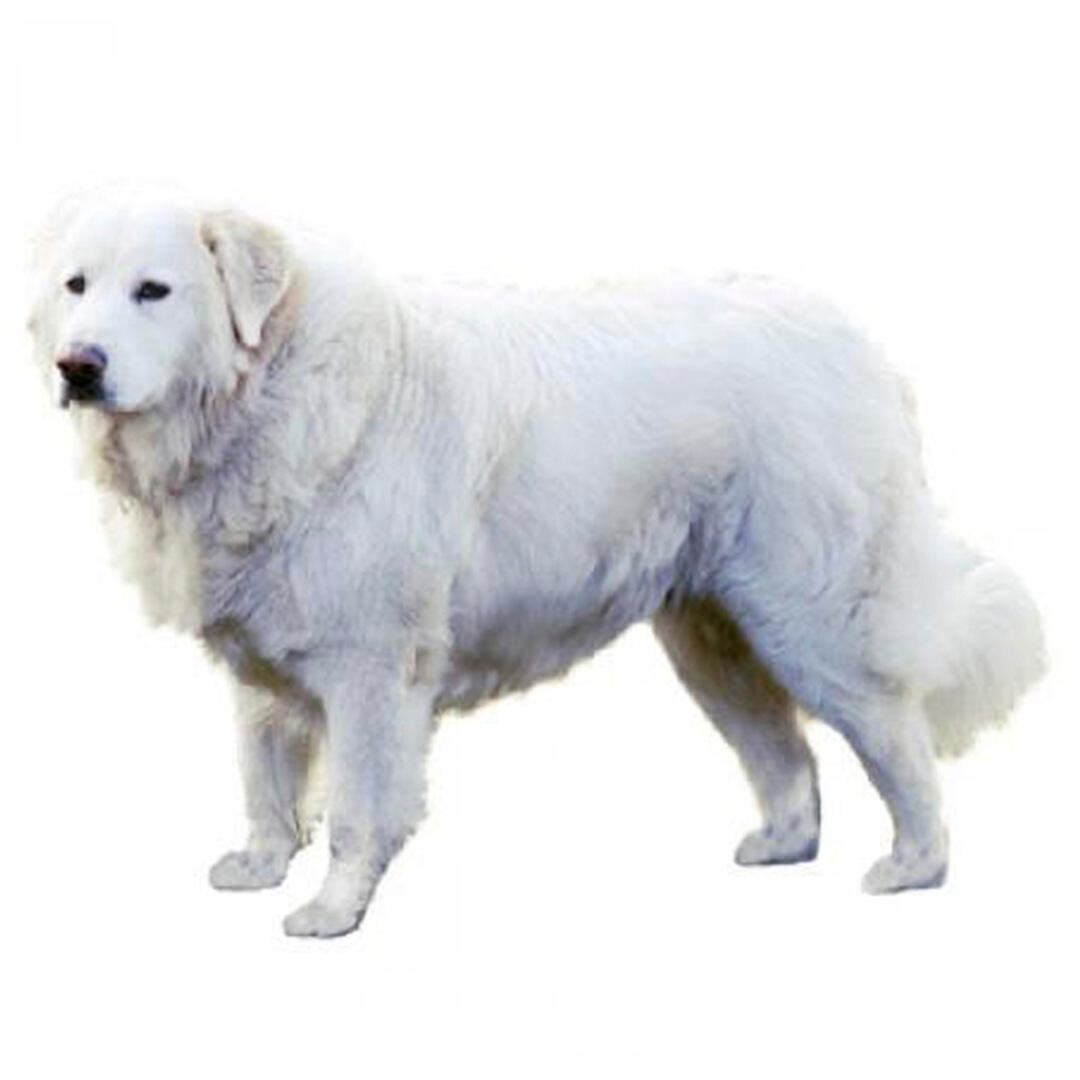
| Lifespan: | 11 – 13 years |
| Weight: | 30 – 45kg |
| Height: | 60 – 73cm |
| Colours: | White |
| Size: | Large |
| UK Kennel Club Groups: | Pastoral |
The Maremma Sheepdog breed can be prone to:
- Hip dysplasia
- Elbow dysplasia
- Gastric dilatation volvulus
Priority Kennel Club health schemes and testing:
- Hip dysplasia screening scheme
Given their history as a flock guardian breed, it should be no surprise that the Maremma is independent, intelligent and likely to be suspicious towards strangers.
Completely devoted and loyal to their family, but constantly alert to suspicious activity, the Maremma demands a very dedicated owner. They can be trained to a high standard, and should be, as a bored Maremma will be extremely difficult to live with.
Early socialisation with other people and animals is vital as is ongoing management of such a protective giant.
| Lifespan: | 11 – 13 years |
| Weight: | 30 – 45kg |
| Height: | 60 – 73cm |
| Colours: | White |
| Size: | Large |
| UK Kennel Club Groups: | Pastoral |
Originally bred to protect flocks of sheep from wolves, bears and later, packs of feral dogs and human thieves, the Maremma Sheepdog can trace its origins to dogs of a similar type and function over 2000 years ago. Writing in the 1st century BC, Varro describes the type in detail, mentioning that the white colour was preferred to facilitate spotting them in the dark. Despite their size and weight, the Maremma was still at risk from bears and wolves and to protect them from injury to the neck and throat, they wore broad leather collars with large protruding spikes.
Sharing the same ancestry as the Hungarian Kuvasz and the French Pyrenean Sheepdog, the Maremma we know today is an amalgamation of two distinct types, the shorter coated Maremmano and the longer backed Abruzzese. Brought together as one breed in the 1950’s under the name Cane da Pastore Maremmano-Abruzzese, they have remained known as the Maremma Sheepdog or simply Maremma, elsewhere.
First brought to the UK as an exhibit at London Zoo in the late 1820’s, listed as the Italian Wolf Dog, and occasionally imported during the Victoria period – Queen Victoria owned a pair named Boldia and Ruffo – it was not until the 1930’s that serious attempts were made to breed them or recognise them. Recognition came from the Kennel Club in 1936 and the UK breed club was formed in 1950
The ideal Maremma owner lives somewhere remote and rural, has few visitors and lots of land. The Maremma does not welcome visitors and those with the experience to live with this breed will understand the importance of safely managing their dog so that accidents cannot occur. You’ll need to enjoy long slow walks in remote places, whilst Maremmas do not walk fast they do possess incredible stamina and would in their intended job, walk many miles a day with their flock.
This is a dog who enjoys long periods of quiet exercise. They are never happier than patrolling their country estate keeping their eyes on all human and animal charges! The Maremma needs a considerable amount of this kind of off lead exercise, however due to their suspicious nature, it may be difficult to provide this in public places unless you live in a rural location. It is extremely difficult to provide the Maremma the exercise and mental stimulation required in a pet home without adequate land as they are never off-duty!
This is a very big and heavy dog so indoors they will require sufficient space to lie down and spread out fully, dry off when wet and relax with their owners. A dedicated dog room for when occasional visitors call is wise! Outdoors, this is a dog suited to a large, securely fenced farm without many visitors, ideally with livestock to protect.
Not recommended for anything other than remote rural living.
Large breed dogs, as well as having large appetites, benefit from a different balance of nutrients including minerals and vitamins compared to smaller-breed dogs. The Maremma Sheepdog is also prone to bloating and stomach problems; smaller, more frequent meals can help minimise this risk.
This heavy, dense coat takes a lot of upkeep and the dog needs a thorough brushing and combing several times a week or the coat will become matted and the dog will develop eczema and hot spots. The pads should be examined and trimmed between them, if necessary.
Careful and clever motivation are required to encourage the Maremma to work with their person, as they are intelligent and independent, bred to make their own decisions. Unfortunately making the wrong decision regarding whether a person is a threat or not could cost the Maremma their life, so early socialisation and constant training are vital.
Positive reinforcement and science-based methods are the way forward, as heavy handed or aversive methods will result in a Maremma who seeks to avoid their trainer, and possibly increase aggression towards other humans. A reliable recall and learning to walk on a harness and loose lead are vital.
The Maremma is loyal and dedicated to their family, however they are extremely suspicious of guests and this may rule them out for homes with children of any age, who will want to bring friends home. The exercise requirements, training requirements and size of this dog mean it is not recommended with very small children or frail adults.
While many dogs are traditionally thought of as being good with children, all dogs and children need to be taught to get on with and respect each other, and be safe together. Even so, dogs and young children should never be left alone together and adults should supervise all interactions between them.